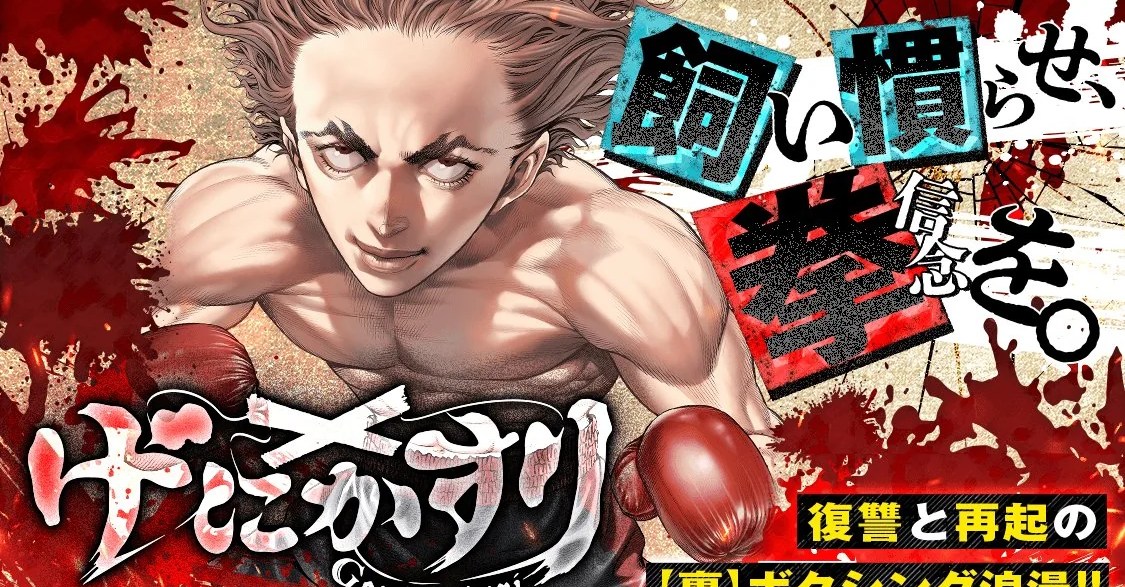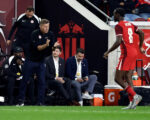
I’ve got a fairly flexible schedule, so I try to give platelets once a week. Yeah, the giant needle (quite literally) sucks, but I get to futz around on my phone for two hours in a comfy chair with the knowledge that I’m doing a public good.
Today’s attempt ended about 15 minutes in when the return pressure decided to skyrocket and change the sensation inside my arm from “insistent but tolerable suction” to “trying to pull my entire cardiovascular system out through the hole.” I still feel bad about it; I’ve been struggling to find fulfillment these last few years, so I treasure opportunities to make a tangible difference.
Guess now’s as good a time as any to talk about another boxing cartoon from Japan that makes me happy.
Artist/writer Sako Toshio made his name with Usogui, part of the Japanese tradition of high-stakes gambling series alongside Kaiji and Kakegurui, but I learned of him through his then-ongoing capoeira manga Batuque. While it had its share of foibles, his unique semi-realistic artstyle, impressive knack for conveying dynamic motion, and deep knowledge of martial arts made for quite the compelling read.
While Batuque concluded in February of last year, Sako didn’t stay on the sidelines for long. 12 months later, he returned to the pages of Weekly Young Jump with a brand-new boxing manga.
Genikasuri sets the stage for a classic comeback narrative. Protagonist Harima Ryo, once a promising featherweight prospect, awakens in a hospital bed to learn that his bid for the OPBF title left him catatonic for two years following an emergency craniotomy. This proves merely the tip of the iceberg; over the course of the extra-long first chapter, he discovers that his father passed away from an automobile accident while Ryo was unconscious and his former trainer, Coach Yonda, sold his gym’s ring to cover gambling debt.
On top of that, a discussion with a local sportswriter reveals that this was no freak occurrence. Ryo entered the ring that fateful night as damaged goods thanks to prolonged sparring with the larger, more skilled Banjo Dai, receiving a pittance per session while Yonda raked in massive sums to turn a blind eye to his deterioration.
As is tradition for these sorts of stories, Ryo vows revenge against the network of promoters and managers who used him up and spat him out. With his brain injury barring him from ever seeing the ring again, he threatens Yonda into handing over his promoter’s license as restitution, only to swiftly run into a key hurdle: Yonda Gym doesn’t have any fighters to promote.
A sudden outburst draws their attention to the gym’s television, where Olympic boxer Hanabi is furiously ripping apart his country’s flag after having to settle for silver. It’s clear to everyone in the stadium and abroad that Hanabi has smothered a potentially legendary pro career in the crib; nobody in the strictly regimented world of Japanese boxing will touch this guy with a ten-foot pole.
Except, perhaps, a couple of desperate bottom-feeders with building-sized chips on their shoulders.
Compared to Batuque’s byzantine backdrop of Brazilian gang politics, Genikasuri has a fairly straightforward approach. It quickly introduces the protagonists, the antagonists, and the route by which the former will overcome the latter. Hanabi’s expedited rise through the JBC’s rankings runs parallel to the shenanigans, both legal and extralegal, that Yonda and Ryo engage in to make that rise possible in the face of institutional opposition.
In addition to Sako’s engaging art, the big selling point for me is Ryo. Capable of underhanded tactics but committed to remaining a fundamentally good person, he’s an intensely likable and compelling protagonist who contrasts nicely with the assorted scumbags he has to deal with.
I’m not as sold on Hanabi, who’s yet to show much character beyond being as abrasive as humanly possible. He’s also involved in some sort of shadowy conspiracy, which raises red flags for me after such macro-level machinations proved to be the weakest parts of both Batuque and personal problematic favorite Kengan Ashura.
Still, the good far outweighs the bad at this point, helped by the fact that Sako absolutely knows ball. He’s enough of a boxing nut to strap on the gloves and win a fight at the age of 51 and isn’t shy about including references to real-world bouts. One of Hanabi’s first fights pits him against a slugger who’s unafraid to use his head, a matchup that Ryo specifically compares to Orlando Salido vs Vasiliy Lomachenko.
I don’t foresee Genikasuri achieving the legendary status of Hajime no Ippo or Ashita no Joe, but I’m greatly enjoying what I’ve seen so far, especially with the recent suggestion that Yonda Gym’s roster might expand into a proper Island of Misfit Toys instead of focusing exclusively on Hanabi.
You can currently read the first six chapters and the six most recent chapters for free on the official MangaPlus site, but you’ll have to subscribe for the middle.

















